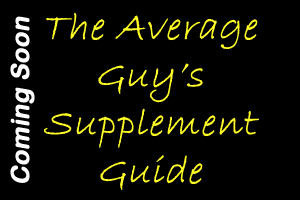Truth be known, I could make an excellent couch potato. In fact, on some weekends it a battle for prime location on our couch with myself, my husband Robert, and the two champion couch potatoes – Max and Pebbles (the pug dogs). But sitting for too long, especially when your job requires it, can be dangerous for your health. Besides the problems related to inactivity in itself, sitting can cause a host of muscular problems. This newsletter is a printing of a lecture I gave at our local newspaper for their office staff. The lecture was entitled “The Hazards of "Sitting Down on the Job". Who would have thought that office jobs could be hazardous to your health? A person in a job that requires long hours of sitting is just as much at risk for health problems as those individuals doing manual labour or heavy lifting in their jobs. Some of the risks associated with desk jobs are:
- chronic low back pain
weak abdominal muscles possibly leading to back problems
repetitive use injury such as carpal tunnel syndrome
weak gluteal muscles possibly leading to low back pain
Let us take a more in depth look at the muscles affected by sitting down on the job!
Upper Crossed Syndrome:
Muscle imbalances are common in almost all of us. Posture affects these imbalances and it is important to recognize postural problems and make corrections where necessary. The first posture that is important is the position of the head. Most people have a forward head posture. This is caused by the invention of the computer and sitting long hours looking at computer screens. If you look at the ideal posture, a line should fall down the side of the body from the midline of the ear, through the shoulder, hip, knee and ankle. If the head is forward of this line, it plays havoc with the muscles of the upper quadrant. This often leads to internal rotation of the shoulder. This leads to shortening of the pectoral (chest) muscles. This also causes lengthening of the upper back muscles such as rhomboids and trapezius.
If a muscle is not at its ideal length (either too short or lengthened) it causes dysfunction at the joints these muscles surround. This can then lead to headaches, neck pain, stiffness and tightness in the neck, tingling in arms or hands. To alleviate this "upper crossed" syndrome, it is important to stretch the muscles that have been shortened (chest) and strengthen the muscles of the upper back (rhomboids, trapezius, rotator cuff). Resistance exercises such as pulling exercises will go a long way to alleviating the symptoms associated with this common postural problem.
Hip Flexor Muscles:
These very powerful muscles located in the front of the body run down front of your hip area. These muscles are responsible for lifting the leg during a walking or running motion. These muscles are also prime muscles exercised during conventional sit up exercises. As we sit for long periods of time, as in a desk job, these muscles tend to shorten as the leg is always in a bent or flexed position at the hip. As a result, when one stands these muscles remain in a shortened position resulting in the pelvis being pulled forward. This in turn pulls on the muscles of the low back resulting in chronic low back pain. There are a couple of ways to decrease the effects of potentially shortening hip flexor muscles:
- Get up and move! On breaks go for a short walk and on lunch hour, take the time to go for a brisk walk.
Stretch, stretch and stretch again. At least 3 times per week, stretches should be done to balance the effects of sitting. This can take as little as 10 minutes once per day – a perfect activity while watching TV in the evening.
So, even though you may enjoy some well deserved couch time, remember you will need to counter balance that with some stretching and strengthening.
Till next time,
Narina
"Monitoring, Mentoring, Motivation"
